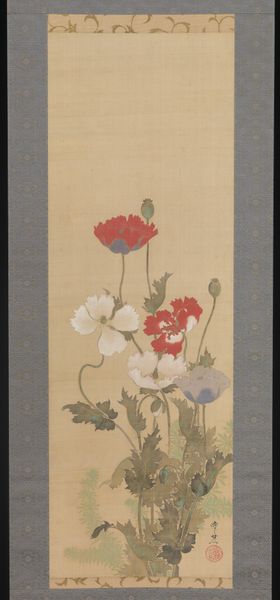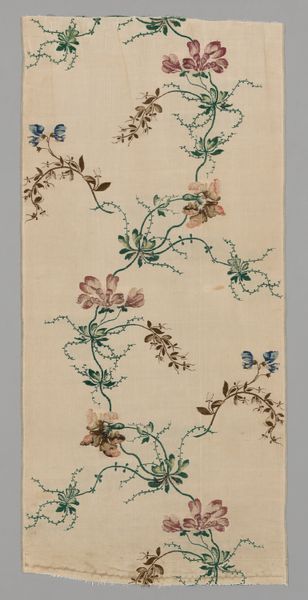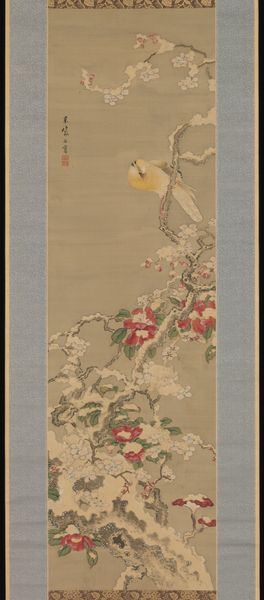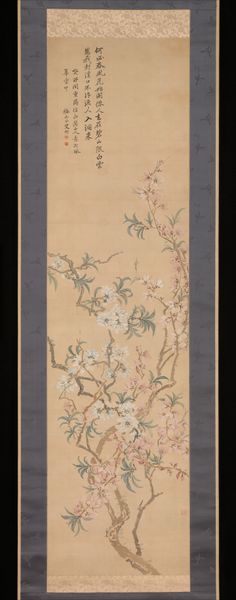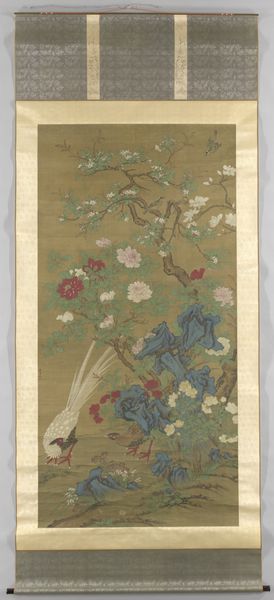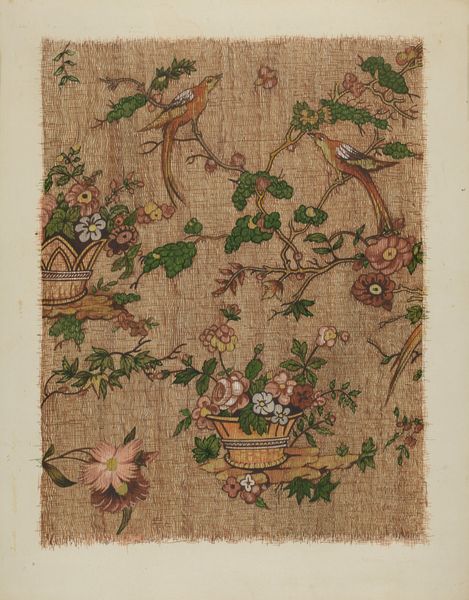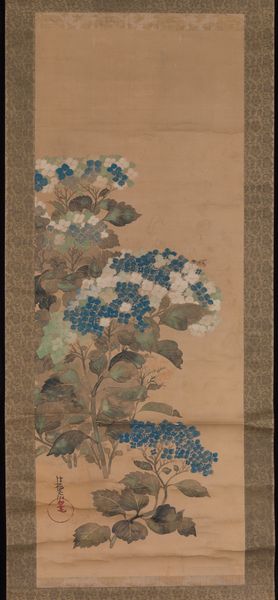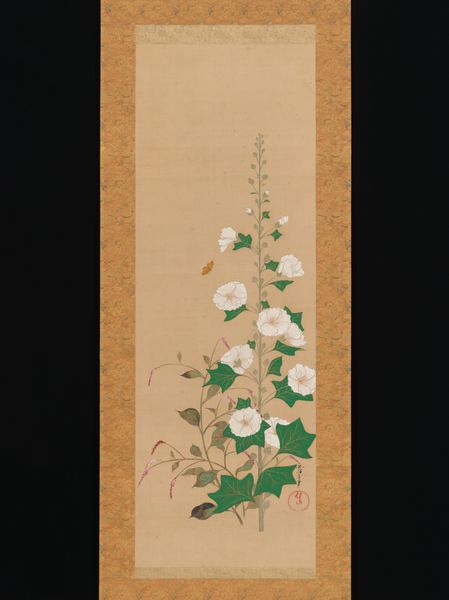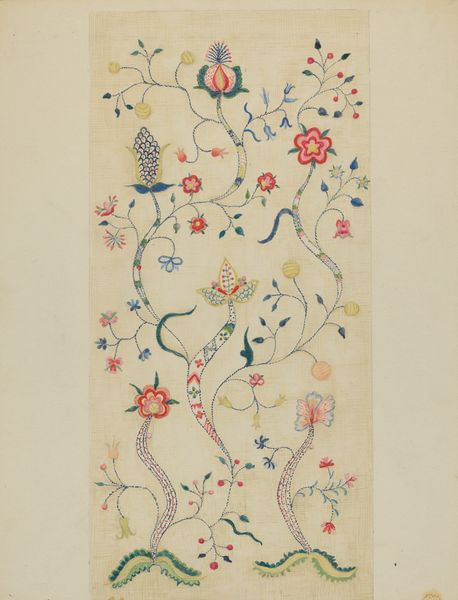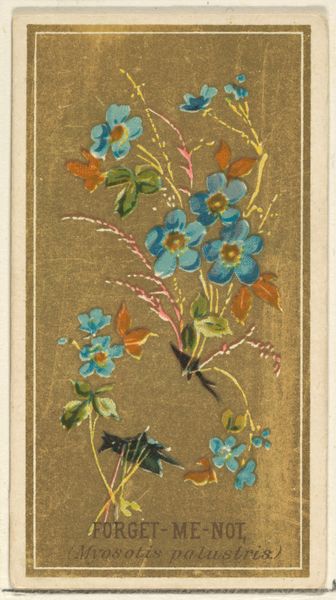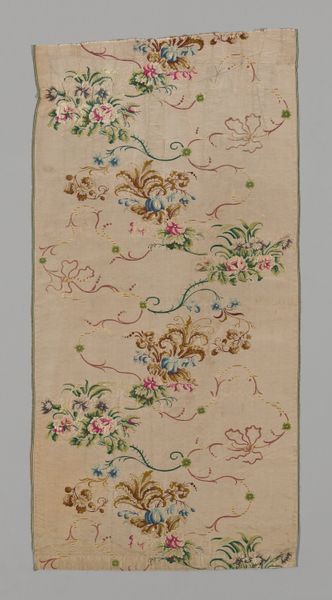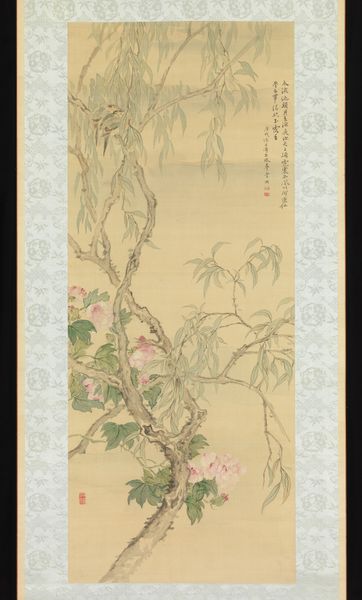
silk, plein-air, watercolor, impasto, hanging-scroll, ink
#
silk
#
plein-air
#
asian-art
#
landscape
#
ukiyo-e
#
watercolor
#
impasto
#
hanging-scroll
#
ink
#
orientalism
#
line
#
watercolor
Dimensions: 36 3/4 x 11 3/4 in. (93.35 x 29.85 cm)
Copyright: Public Domain
Editor: So, here we have "Poppies," a watercolor and ink hanging scroll on silk, by Sakai Hōitsu, dating from the early 19th century. I’m really struck by how delicate and ephemeral it feels. The colors are so muted, and yet there’s this incredible vibrancy in the poppies themselves. What stands out to you most when you look at it? Curator: The poppies, of course, immediately draw the eye, don’t they? But beyond the surface beauty, consider the symbolism. In many cultures, poppies are linked to sleep, death, and remembrance. Hōitsu, though, offers something beyond that familiar somber connection. Notice how the blossoms are reaching, yearning. Do you see how they might also be suggesting resilience? Editor: Resilience? That's interesting. I wouldn’t have immediately jumped to that, seeing as they're often connected with mourning. But I see what you mean about the way they're reaching upward. Is that upward direction intentional? Curator: Intention is everything in art, isn't it? Look closer. Notice the composition as a whole: the strength and upward reach from base to the top, anchored by the gold and cream textile mounting that serves to reinforce the sacred verticality typical of hanging scrolls. Poppies often reference oblivion; yet, here, they transcend darkness with renewed hope, subtly opposing established interpretations. It serves almost as a kind of…visual haiku, no? Editor: That makes a lot of sense when you put it like that. So, it’s not just a pretty picture of poppies, but a kind of meditation on life and death, but from a hopeful perspective? Curator: Precisely. Hōitsu's choice to paint poppies—associated with sleep and death—in a style conveying a striving upwards could imply an attempt to use existing symbolism as a vehicle to express the potential to surpass darkness, and it’s a poignant expression. Editor: Wow, I'll never look at a poppy the same way again. It's amazing how much history and cultural weight can be packed into something that seems so simple. Thanks! Curator: Indeed. The dialogue between tradition and individual expression—it’s the enduring magic of art.
Comments
minneapolisinstituteofart about 2 years ago
⋮
Sakai Ho_itsu was a member of a distinguished samurai family. In addition to mastering several martial arts, he also excelled at poetry, Noh dance and tea ceremony. After experimenting with a variety of painting styles, he became intensely interested in the decorative Rinpa school, named after one of its greatest masters, Ogata Ko_rin. Searching out remaining works by Ko_rin, who had died forty-five years before Ho_itsu's birth, he published a woodblock book of Ko_rin's works. Here, Ho_itsu's use of jewel-like pigments and the tarashikomi technique of pooling colors to create a softly mottled effect, continues the style championed by Ko_rin.
Join the conversation
Join millions of artists and users on Artera today and experience the ultimate creative platform.
